Introduction
The move to cloud computing is inevitable and inexorable. However, for large enterprises, frequently burdened with strict regulatory requirements and a constantly evolving threat environment, adopting cloud is not a trivial matter. Enterprises can miscalculate the organisational impact of cloud by not viewing it holistically or “at scale”. Even organisations with the best intentions can get off on the wrong foot if expectations are not carefully managed from the outset.
In our experience, now spanning three countries, multiple industries and almost a decade of engagements, we have noticed a common pattern as large enterprises seek to introduce cloud computing into traditional IT environments. This post describes that pattern and how it can be avoided in broad strokes.
For a more detailed discussion of common adoption pitfalls and a methodology for successfully adopting cloud at scale, please download our whitepaper: Building the Core Foundations for Cloud at Scale.
When cloud hype hits enterprise reality
To educate its clients on the lifecycle — maturity, adoption and application — of emerging technologies, research firm Gartner developed an insightful methodology dubbed the “Hype Cycle”. It provides a conceptual representation of the maturity of emerging technologies through five phases: Technology Trigger, Peak of Inflated Expectations, Trough of Disillusionment, Slope of Enlightenment and Plateau of Productivity.
We have seen a similar cycle in terms of cloud adoption in large enterprises. In a typical cloud adoption scenario, there is a trigger to begin the journey — perhaps the competitive need to achieve faster time to value, to overcome integration challenges after an acquisition, to reduce capital costs or to address data centre constraints.
Next, the cloud initiative is released amidst great fanfare. Demand races off, well in advance of the organisation’s ability to meet it (and remain within regulatory requirements), until it reaches a “peak of inflated expectations”.
When those expectations aren’t met, through a failure to provide proper training, not recognising the fundamental shift in IT delivery methods associated with cloud, or other factors, a “trough of disillusionment” typically follows. The initiative wanes and security and compliance often step in to limit or rein in the initiative to ensure proper governance. Cloud adoption slows or stops completely with no path to full production.
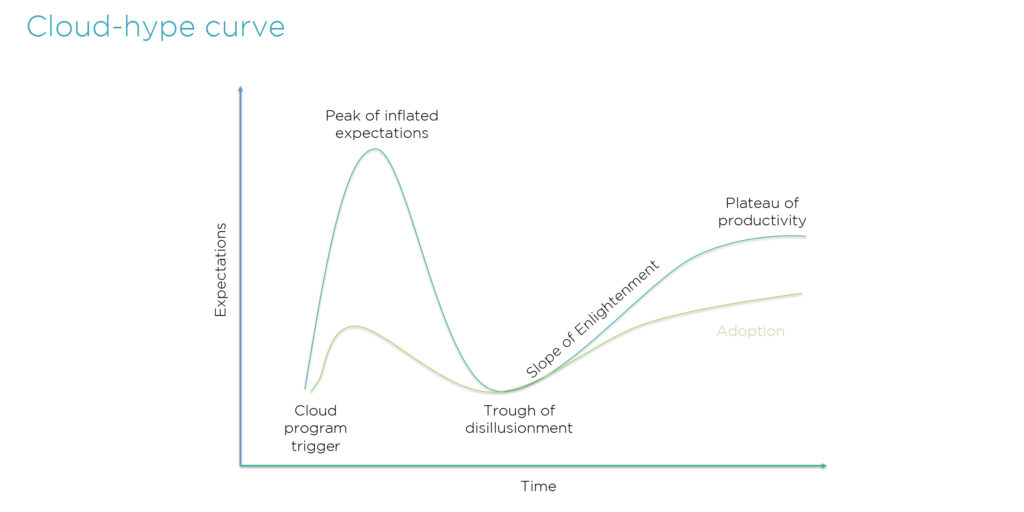
Weeks or months later, the project is rebooted but often with reduced scope in a bid to avoid past disappointments. The true value of cloud is not achieved, adoption plateaus and is ultimately middling at best.
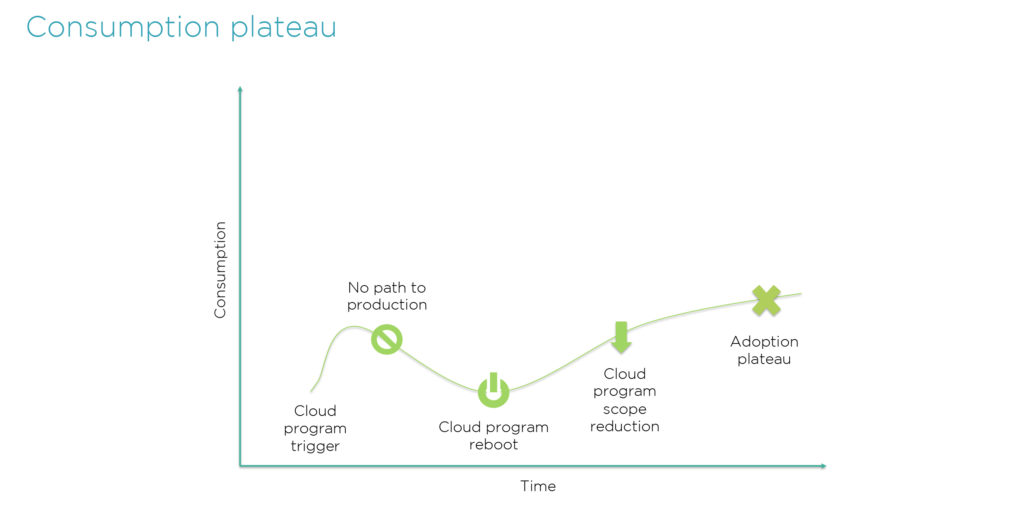
Avoiding the cloud adoption trough of disillusionment
In our view, this common scenario can be avoided. By approaching cloud adoption from a different perspective, organisations can control expectations and manage consumption while mitigating security and compliance concerns from the outset of a cloud adoption journey.
First, all organisations have policies or “opinions” around the configuration of applications from the perspective of at least security, infrastructure and operations. To deploy cloud effectively and at scale, we believe these opinions must be captured, converted and stored as standardised consumables within a general-purpose cloud or “data centre as code” environment.
This standardised consumables library of opinions acts as the building blocks needed to adopt cloud at scale — they are repeatable, reusable and easily refreshed should new features be added, or new security or compliance postures assumed. Also, they require minimal operational touch, eliminating human error and enabling the ability to deploy infrastructure quickly and securely.
Next, it’s crucial to select the right “masthead” application. A masthead application has several key characteristics including (but not limited to):
- Client-impacting – the application should not be trivial, but meaningful to the success of the business;
- The application should carry both internally and externally recognisable branding;
- Application and support teams must be supportive of the change; and
- The workload is currently experiencing scale, cost or agility constraints that cloud computing can help overcome.
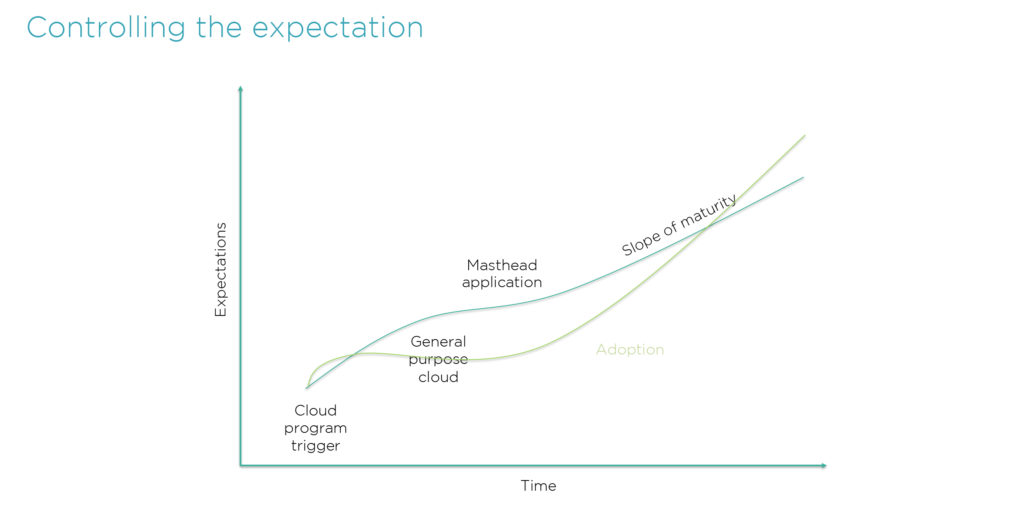
Training that takes place during this initial stage, as well as the documentation developed, strengthens the foundation for future applications. This measured, iterative approach to bringing applications to production is the key to overcoming the challenges of cloud adoption. Adoption and consumption steadily grow alongside the organisation’s cloud maturity, including the establishment of a library of consumables, the building of robust onboarding processes, and the development of support services. Finally, the organisation’s cloud can support any number of applications, dynamic workload placement and advanced billing and metering.
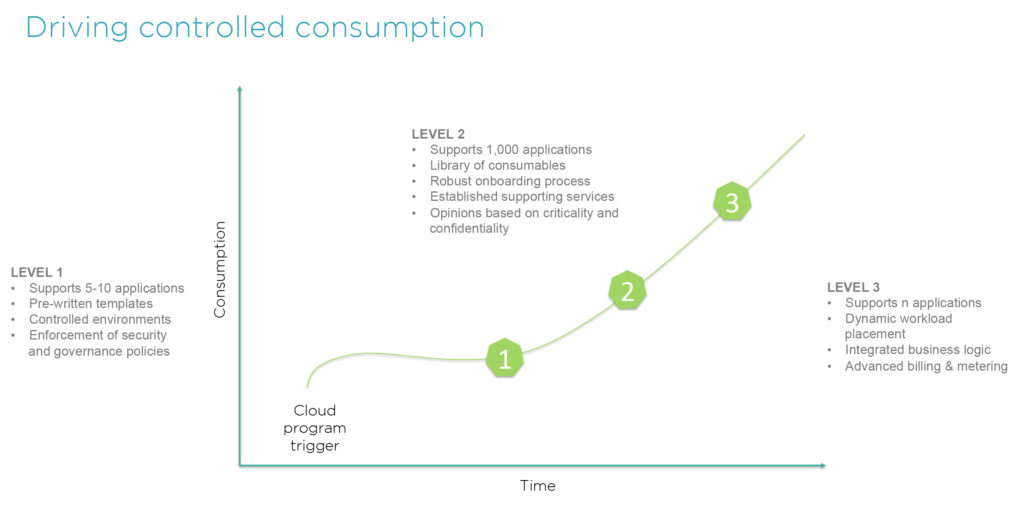
Sourced has developed a proven methodology and IP for helping large, highly regulated enterprises accelerate their cloud adoption journey whilst ensuring security and compliance objectives are met at each stage of the journey. The Cloud at Scale™: Foundations offering delivers a general-purpose cloud that aggregates enterprise opinions into native code, meeting the vast majority of the organisation’s needs. Acting as a virtual data centre, this becomes the foundation on which the rest of the cloud journey is built.
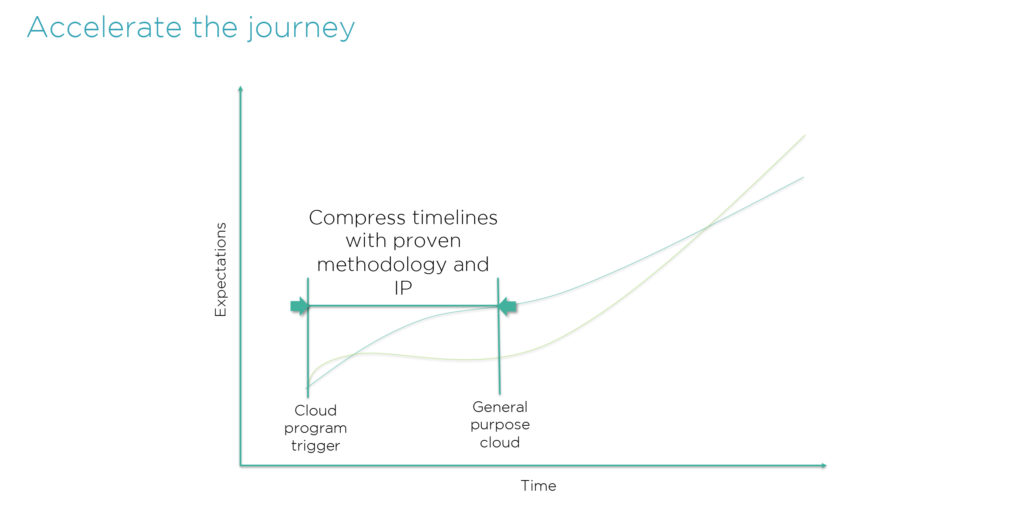
To learn more about avoiding common cloud adoption pitfalls and best practices to accelerate a successful journey, read our whitepaper: Building the Core Foundations for Cloud at Scale.
Paul Bertoni has more than 25 years of technical leadership experience within financial services, consulting and database marketing organisations. Since joining Sourced in 2016, Paul has held various positions within the company and is currently the Public Sector Executive in Canada.




